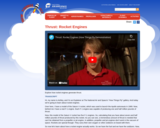
Explore how rocket engines generate thrust.
- Subject:
- Applied Science
- Engineering
- Physical Science
- Material Type:
- Activity/Lab
- Provider:
- National Air and Space Museum
- Author:
- National Air and Space Museum
- Date Added:
- 09/26/2022

Explore how rocket engines generate thrust.
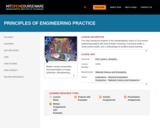
This class introduces students to the interdisciplinary nature of 21st-century engineering projects with three threads of learning: a technical toolkit, a social science toolkit, and a methodology for problem-based learning. Students encounter the social, political, economic, and technological challenges of engineering practice by participating in real engineering projects with faculty and industry; this semester’s major project focuses on the engineering and economics of solar cells. Student teams will create prototypes and mixed media reports with exercises in project planning, analysis, design, optimization, demonstration, reporting and team building.
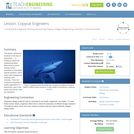
This lesson introduces students to the idea of biomimicry or looking to nature for engineering ideas. Biomimicry involves solving human problems by mimicking natural solutions, and it works well because the solutions exist naturally. There are numerous examples of useful applications of biomimicry, and in this lesson we look at a few fun examples.

This first general textbook An introduction to ontology engineering has as main aim to provide the reader with a comprehensive introductory overview of ontology engineering. A secondary aim is to provide hands-on experience in ontology development that illustrate the theory.

IDS.900 Doctoral Seminar in Engineering Systems examines the core theory and contextual applications of the emerging field of Engineering Systems. There is a focus on doctoral–level analysis of scholarship on key concepts such as complexity, uncertainty, fragility, and robustness, as well as a critical look at the historical roots of the field and related areas such as systems engineering, systems dynamics, agent modeling, and systems simulations. Contextual applications of the course range from aerospace to technology implementation to regulatory systems to large–scale systems change. Special attention is given to the interdependence of social and technical dimensions of engineering systems.
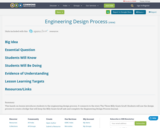
This hands-on lesson introduces students to the engineering design process. It connects to the story The Three Billy Goats Gruff. Students will use the design process to create a bridge that will keep the Billy Goats Gruff safe and complete the Engineering Design Process Journal.
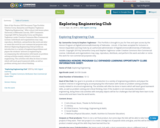
Date of this Version
2019
Document Type
Portfolio
Citation
Corey, Samantha and Stephen Yaghmour. “Exploring Engineering.” After school club lesson plans. University of Nebraska-Lincoln, 2019.
Comments
Copyright 2019 by Samantha Corey and Stephen Yaghmour under Creative Commons Non-Commercial License. Individuals and organizations may copy, reproduce, distribute, and perform this work and alter or remix this work for non-commercial purposes only.
Abstract
Exploring Engineering Club provides an introduction to a variety of engineering problems and piques the students’ interest in engineering by accompanying the information with hands-on problem solving activities mainly related to structural engineering. The activities will often be done in teams which will teach good teamwork skills, as well as problem solving and critical thinking.
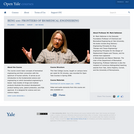
The course covers basic concepts of biomedical engineering and their connection with the spectrum of human activity. It serves as an introduction to the fundamental science and engineering on which biomedical engineering is based. Case studies of drugs and medical products illustrate the product development-product testing cycle, patent protection, and FDA approval. It is designed for science and non-science majors.
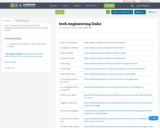
This is a resource for video clips and links for technology and engineering as well as links for making fractals
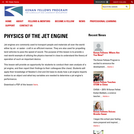
This lesson will provide an opportunity for students to conduct their own analysis of a jet engine, and then report their findings to their colleagues (the class). Students will apply their knowledge of Newtons 2nd and 3rd laws to study how a jet engine imparts motion to an object and what key variables are needed to determine a jet engines performance.

This course illustrates how knowledge and principles of biology, biochemistry, and engineering are integrated to create new products for societal benefit. It uses a case study format to examine recently developed products of pharmaceutical and biotechnology industries: how a product evolves from initial idea, through patents, testing, evaluation, production, and marketing. Emphasizes scientific and engineering principles; the responsibility scientists, engineers, and business executives have for the consequences of their technology; and instruction and practice in written and oral communication.
The topic focus of this class will vary from year to year. This version looks at inflammation underlying many diseases, specifically its role in cancer, diabetes, and cardiovascular disease.
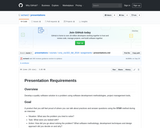
Project Assignment for the course "CSC 322: Software Engineering" delivered at the City College of New York in Fall 2018 by William Chan as part of the Tech-in-Residence Corps program.
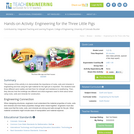
The purpose of this activity is to demonstrate the importance of rocks, soils and minerals in engineering and how using the right material for the right job is important. The students build three different sand castles and test them for strength and resistance to weathering. Then, they discuss how the buildings are different and what engineers need to think about when using rocks, soils and minerals for construction.
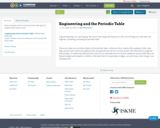
Some examples of the role the periodic table plays in engineering a better world.
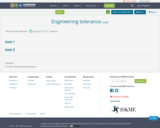
It is about Engineering Tolerance

This is a reading and discussion subject on issues in the engineering of software systems and software development project design. It includes the present state of software engineering, what has been tried in the past, what worked, what did not, and why. Topics may differ in each offering, but will be chosen from: the software process and lifecycle; requirements and specifications; design principles; testing, formal analysis, and reviews; quality management and assessment; product and process metrics; COTS and reuse; evolution and maintenance; team organization and people management; and software engineering aspects of programming languages.

This seminar-format course provides an in-depth presentation and discussion of how engineering and biological approaches can be combined to solve problems in science and technology, emphasizing integration of biological information and methodologies with engineering analysis, synthesis, and design. Emphasis is placed on molecular mechanisms underlying cellular processes, including signal transduction, gene expression networks, and functional responses.

Learn to produce great designs, be a more effective engineer, and communicate with high emotional and intellectual impact. This project based course gives students the ability to understand, contextualize, and analyze engineering designs and systems. By learning and applying design thinking, students will more effectively solve problems in any domain. Lectures focus on teaching a tested, iterative design process as well as techniques to sharpen creative analysis. Guest lectures from all disciplines illustrate different approaches to design thinking. This course develops students' skills to conceive, organize, lead, implement, and evaluate successful projects in any engineering discipline. Additionally, students learn how to give compelling in-person presentations. Open to all majors, all years.
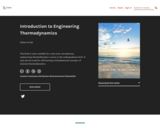
Short Description:
The book is most suitable for a one-term, introductory engineering thermodynamics course at the undergraduate level. It may also be used for self-learning of fundamental concepts of classical thermodynamics.
Long Description:
This open book is written with a goal to support students’ learning of fundamental concepts and engineering applications of classical thermodynamics. It features concise explanations of key concepts, step-by-step solutions to engineering examples, and interactive practice problems. The book is most suitable for a one-term, introductory engineering thermodynamics course at the undergraduate level. It may also be used as self-learning materials or a supplement to other thermodynamics books.
Word Count: 49571
(Note: This resource's metadata has been created automatically by reformatting and/or combining the information that the author initially provided as part of a bulk import process.)

Health technology innovation in low- and middle-income countries (LMICs), including countries in Africa, falls far short of meeting the healthcare needs of these settings. The result is a heavy reliance on products and technologies imported from industrialised countries that are often not suited to, or sustainable for, LMICs.
Appropriate healthcare products for LMICs are best developed in these countries, where local knowledge and understanding of needs, context and available resources may be incorporated into designs and implementation plans. The objectives for enabling health technology development in LMICs include: 1) expanding the base of expertise through research training programmes with a problem-solving focus; 2) stimulating new knowledge, approaches and solutions by enabling innovation; and 3) integrating research communities within and across institutions to build critical mass.
The field of biomedical engineering is central to health technology innovation. This book is a response to the need for biomedical engineering capacity in Africa. It is grounded in the African context. It serves as a resource for academics and students in biomedical engineering, for those interested in entering the field in any capacity and for practitioners at every stage of product development. University leaders intent on establishing new biomedical engineering programmes or departments, may draw on the content for guidance on structuring their offerings. The book reaches beyond Africa, as it is relevant to other LMIC settings, and provides insights to guide global health initiatives focused on technology innovation.